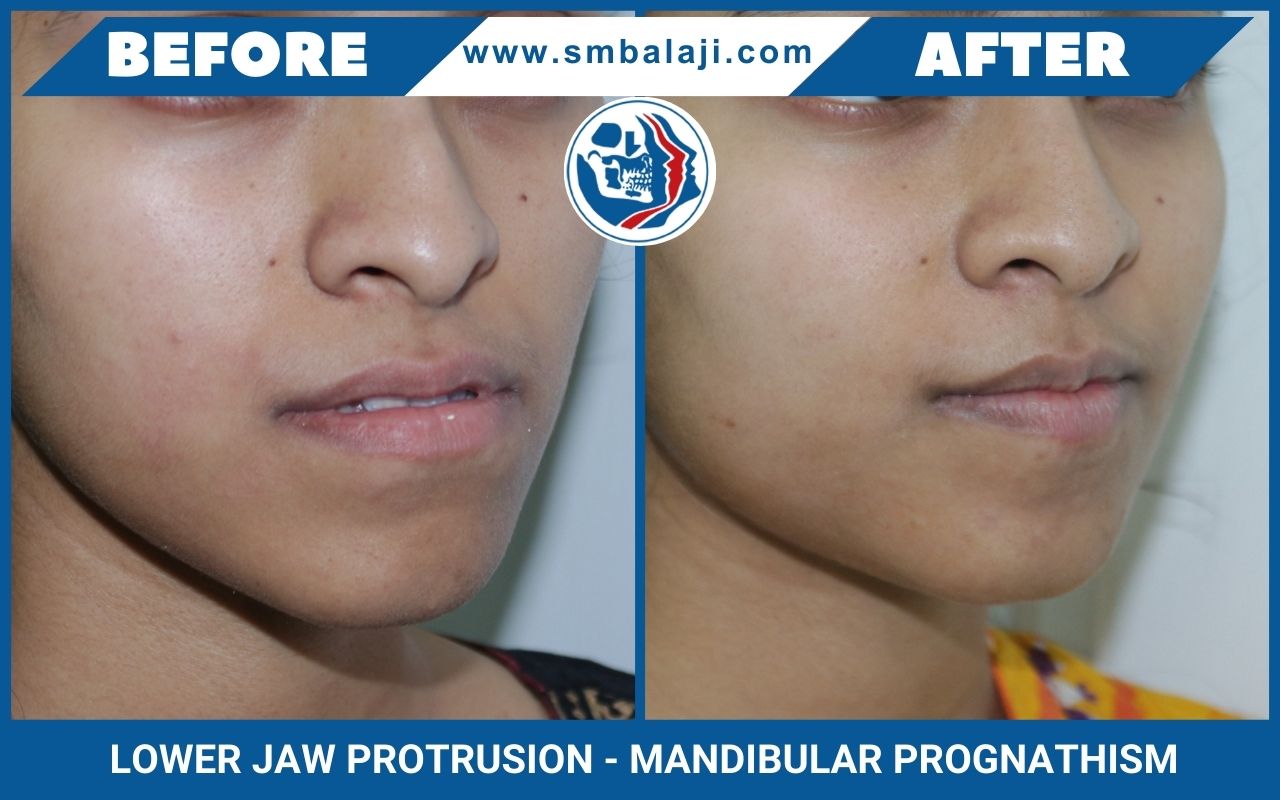Lower Jaw Protrusion
This occurs when there is an overgrown lower jaw (mandible) that protrudes out beyond the upper jaw causing a “long face” and making the nose and eyes to look disproportionately small. Disproportionate jaws can lead to problems with speaking, biting, chewing, swallowing and breathing. The condition also may cause undue stress on the jaw joint (TMJ) and facial muscles. Improper alignment of jaws and teeth may affect the entire facial appearance.
This may be corrected by surgically reducing excess bone in the lower jaw, shortening and setting the chin back.
The advantage of this kind of orthognathic surgery is that immediate results are seen. Also since these surgeries are approached from inside the mouth there are no visible external scars.
Jaw correction surgery brings the teeth and jaws into proper position for better health and appearance. When the appearance is enhanced, it also boosts self esteem. Such surgeries hold the key for youngsters who go through a lot of psychological stress over their facial appearance.



Lower jaw protrusion, or mandibular prognathism, refers to an excessive forward protrusion of the lower jawbone (mandible) beyond the upper jawbone (maxilla). This misalignment can lead to various issues, including overbite, crossbite, open bite, difficulty in chewing and speaking, TMJ disorders, and facial asymmetry.
Causes of Lower Jaw Protrusion:
- Genetics: Familial patterns suggest a genetic influence on lower jaw protrusion.
- Childhood Habits: Thumb sucking, tongue thrusting, and lip biting during childhood can contribute to its development.
- Trauma: Injuries to the jaw or face may result in abnormal jaw growth.
- Tumors: Jaw or facial bone tumors can also contribute to lower jaw protrusion.
- Paget’s Disease: This bone disorder can cause abnormal growth of the jawbone.
Diagnosis:
Diagnosis involves a comprehensive assessment by a dentist or oral and maxillofacial surgeon, including a physical examination, dental records, and X-rays.
Treatment Options:
- Orthodontics: Braces or appliances can correct mild to moderate cases of lower jaw protrusion by repositioning teeth and jaws.
- Bilateral sagittal split osteotomy (BSSO): This is the most common type of mandibular osteotomy. It involves cutting the mandible in half on both sides and then moving the two halves of the jaw forward or backward.
- Facial Implants: Implants may enhance the underdeveloped upper jaw, improving facial contour.
- Soft Tissue Grafting: Techniques involving soft tissue grafts can enhance midface symmetry.
Prevention Measures:
- Discouraging Childhood Habits: Parents should discourage thumb-sucking and tongue-thrusting in children.
- Prompt Treatment of Injuries: Timely treatment for jaw or facial injuries minimizes the risk of long-term growth abnormalities.
- Regular Dental Checkups: Early detection and intervention are facilitated through routine dental checkups.
Consulting with an experienced dentist or oral and maxillofacial surgeon is essential for a comprehensive evaluation and discussion of suitable treatment options tailored to individual needs if concerned about lower jaw protrusion.

Bilateral Sagittal Split Osteotomy for Long Lower Jaw Mandibular Prognathism
This teenager complained of having a large lower jaw. She said that this was causing speech and eating difficulties. There was an overjet of 10 mm. It was decided to surgically set back her mandible after decompensation of her arch with fixed orthodontic treatment.
